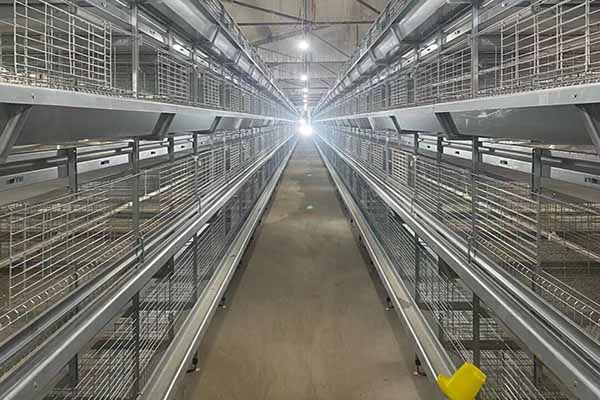What’s the Ventilation Requirement in Cage Housing?
Cage housing systems have become a popular choice for poultry farmers due to their efficiency and ease of management. However, ensuring the right ventilation is crucial for the health and productivity of the chickens. In this article, we will discuss the ventilation requirements in cage housing and how it impacts the overall well-being of the birds.
Importance of Ventilation in Cage Housing
Proper ventilation is essential in cage housing systems to maintain a healthy environment for the chickens. It helps in controlling temperature, humidity, and air quality, which are critical factors for the birds’ health and growth.
1. Temperature Control: Chickens are sensitive to temperature changes. Adequate ventilation ensures that the temperature remains within the optimal range, preventing heat stress and respiratory issues.
2. Humidity Control: High humidity can lead to the growth of mold and bacteria, which can cause respiratory diseases in chickens. Good ventilation helps in maintaining the right humidity levels.
3. Air Quality: Ventilation improves air quality by removing ammonia and other harmful gases produced by chickens. This reduces the risk of respiratory diseases and enhances the overall health of the flock.
Ventilation Requirements in Cage Housing
The ventilation requirements in cage housing can vary depending on several factors:
1. Cage Design: The design of the cage affects the airflow and ventilation efficiency. Cages with larger openings or better ventilation systems require less air exchange rate.
2. Climate: The climate of the region where the farm is located influences the ventilation requirements. Hotter climates may require more ventilation to cool the chickens, while cooler climates may need less.
3. Number of Chickens: The number of chickens in the cage also affects the ventilation requirements. More chickens generate more heat and ammonia, requiring more ventilation.
Optimal Ventilation System
An optimal ventilation system should provide a consistent flow of fresh air while minimizing the entry of external contaminants. Here are some key components of an effective ventilation system:
1. Fans: Fans help in distributing the air evenly throughout the cage housing area.
2. Air Inlets and Outlets: Properly placed air inlets and outlets ensure a balanced airflow.
3. Air Filters: Air filters help in removing dust, ammonia, and other contaminants from the air.
Conclusion
Proper ventilation is a critical aspect of cage housing systems. It not only ensures the health and productivity of the chickens but also contributes to the overall efficiency of the farm. At Livi Machinery, we offer a range of high-quality poultry equipment and services to help farmers meet their ventilation requirements. Contact us today to learn more about our solutions and how we can help improve your farm’s ventilation system.

